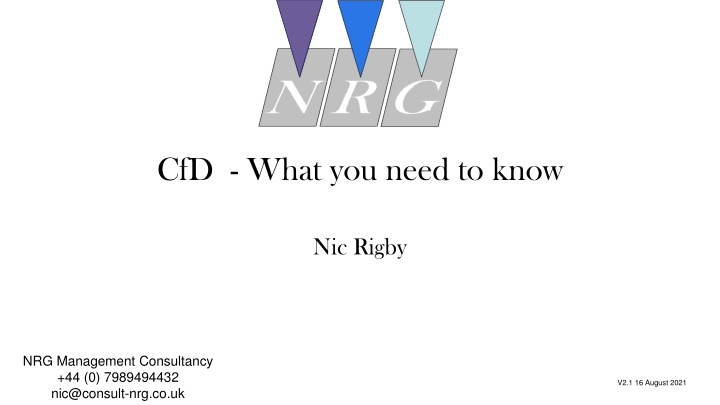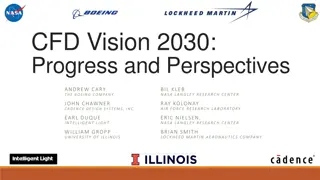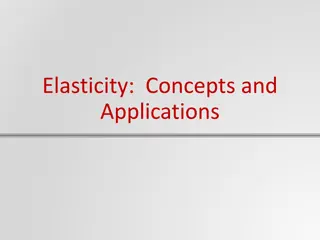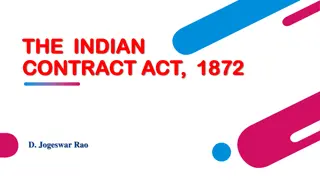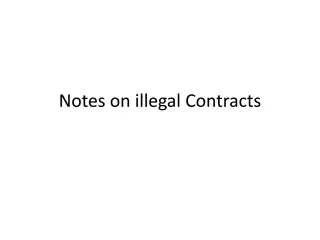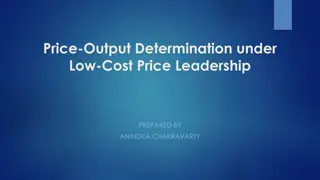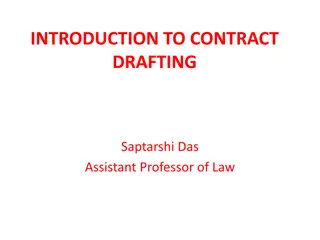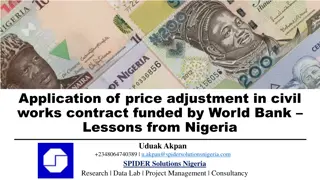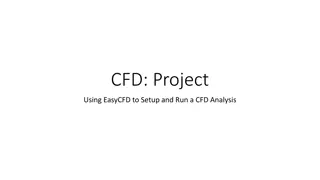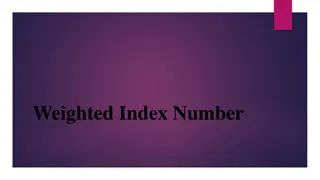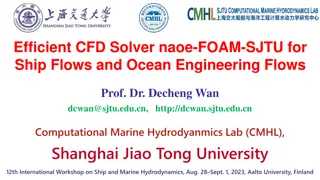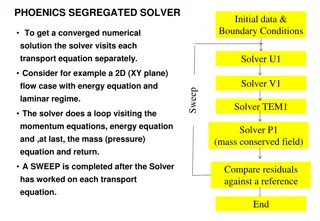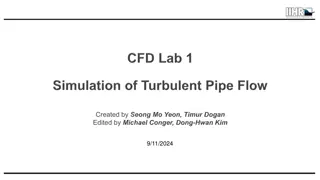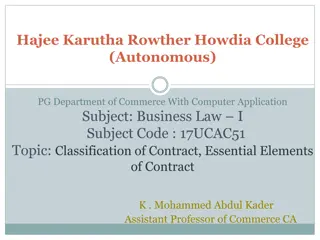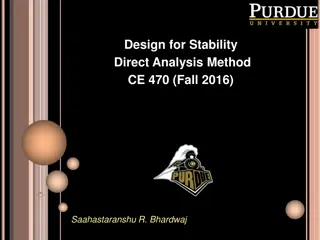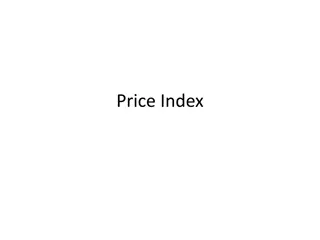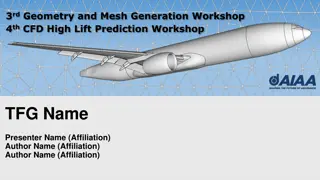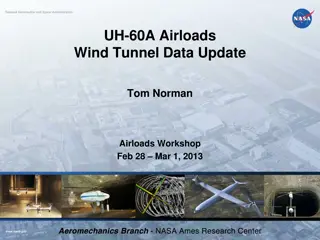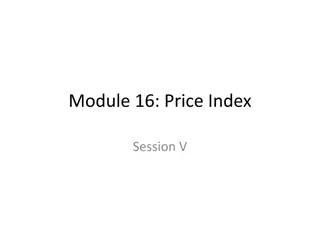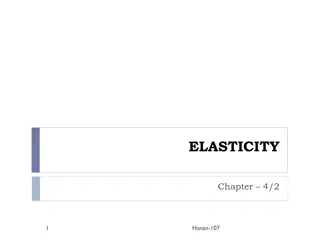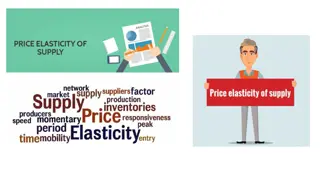CfD Contracts and Price Stability
This presentation delves into the world of Contract for Difference (CfD), shedding light on how it works, the incentives involved, and its impact on environmental sustainability. Explore the concept of CfD payments, drivers, and how they contribute to price stability in various sectors. Gain insights into the acronyms related to CfD and why they play a crucial role in energy and sustainability projects.
Download Presentation

Please find below an Image/Link to download the presentation.
The content on the website is provided AS IS for your information and personal use only. It may not be sold, licensed, or shared on other websites without obtaining consent from the author.If you encounter any issues during the download, it is possible that the publisher has removed the file from their server.
You are allowed to download the files provided on this website for personal or commercial use, subject to the condition that they are used lawfully. All files are the property of their respective owners.
The content on the website is provided AS IS for your information and personal use only. It may not be sold, licensed, or shared on other websites without obtaining consent from the author.
E N D
Presentation Transcript
CfD - What you need to know Nic Rigby NRG Management Consultancy +44 (0) 7989494432 nic@consult-nrg.co.uk V2.1 16 August 2021
Disclaimer The views expressed in this presentation are my own. I would like to thank those who have provided support on the content but any errors are down to me This presentation does not represent the views of those who are sponsoring the SAF CfD project or those participating in the steering group for that project.
Agenda What is a CfD (Contract for Difference)? When a CfD works Alternative incentives CfD content Environmental Sustainability Optional Back up - Optional
Acronyms AR = Allocation Round (electricity CfD) RAB = Regulated Asset Base CCC = Climate Change Committee ROC = Renewable Obligation Certificate (electricity) CCS = Carbon Capture and Storage RTFO = Renewable Transport Fuel Obligation CCUS = Carbon Capture, Utilisation and Storage SAF = Sustainable Aviation Fuel CfD = Contract for Difference SAFp = Sustainable Aviation Fuel producer CRI = Commercial Readiness Index TCW = Target Commissioning Window (electricity CfD) ETS = Emission Trading Scheme TRL = Technology Readiness Level MSW = Municipal Solid Waste
Why a CfD gives price stability CfD Payment Drivers Payment to holder, Strike price Reference price 3000 2000 /tonne 1000 0 2023 2038 -1000 Time Payment to holder Reference Price Strike price
What is a CfD (Contract for Difference)? Contract agreed between two parties (CfD Counterparty and SAF producer) which requires Counterparty to pay SAFp, Strike price Reference price. If Reference price is > Strike price SAFp makes the payment. Provides price stability to the SAFp Reference price includes cost of carbon so no double dipping by SAFp Reference price is Clean so Carbon cost is accounted for
Agenda What is a CfD (Contract for Difference)? When a CfD works Alternative incentives CfD content Environmental Sustainability Optional Back up - Optional
When a CfD works Technology Readiness of 7 to 9 and commercially viable Reduced cost of financing comes from long term certainty of Price and Obligations Draws in multiple suppliers for market growth Capital intensive implementation
Agenda What is a CfD (Contract for Difference)? When a CfD works Alternative incentives CfD content Environmental Sustainability Optional Back up - Optional
Alternative incentives Support mechanism Support mechanism How works How works UK Electricity industry UK Electricity industry Capital grants Contribution towards cost of building is provided 12 Round 1 offshore wind projects paid approx. 10m each Fixed payments Supplier is offered a fixed price per unit of output Feed in tariff as for domestic PV Certificates Suppliers receive for every sustainable unit produced. ROCs Rating schemes/ Green market differentation Government forces suppliers to declare sustainability Rating of appliances Mandates/ Permit Government stipulates that a % of market must be sustainable or pay a buy out UK ETS Tax breaks Government incentivises by reducing taxes R&D funding Regulated Asset Base Users of the plant pay support to the producer determined by the cost of build and a low cost of borrowing. Nuclear CfD
Advantages & Disadvantages Capital Capital grants grants Fixed Fixed payments payments Certificates Certificates Rating Rating Schemes Schemes Mandates Mandates Tax breaks Tax breaks RAB RAB CfD CfD Rewards delivery X X X Who funds Tax payer Flexible Polluter na Polluter Tax payer X Polluter Flexible Stops Double dipping X X X X X X X X X X Cost control X1 X1 X X X X Risk allocation X X X X X X Market expansion X X X X X Consistent X X ? X ? XX XX Simple X 1. Can partly manage by auctioning contracts but has other challenges
Agenda What is a CfD (Contract for Difference)? When a CfD works Alternative incentives CfD content Environmental Sustainability Optional Back up - Optional
SAF CfD Content Key topics Other SAF CfD specific factors CfD other clauses Back up Boiler plate Back up
Key CfD Terms Term Term Approach in low Approach in low carbon carbon electricity electricity CfD CfD Contract length Typically 15 years Technology (and Feedstock) Technologies are banded Obligation to build Must commit in 12 Months and build within Months specified in bid Penalties Fail to commit or build leads to loss of contract and project cannot re apply, If holder self terminates they must pay sum of future payments to LCCC Reference price Base Load Power1 for forthcoming winter or summer LCCC relies upon Generation facility as security, Holder relies upon power billing agent (Elexon) having the regulatory right to raise recovery from suppliers until all CfD payments are made. Underwriting of payments Strike price methodology Some contracts set by negotiation, majority determined by auction Sustainability Major issue at start, further biomass looks unlikely 1 Base Load is an index price for constant delivery thoughout the season as recorded by a market maker
Key Topics SAF specific CfD International interactions (CORSIA) Source of revenue Interaction with related sectors (RTFO) Feedstock scope/ Sustainability CfD Counterparty
Agenda What is a CfD (Contract for Difference)? When a CfD works Alternative incentives CfD content Environmental Sustainability Optional Back up - Optional
Sustainability Key Considerations High confidence in sustainability throughout CfD contract life, K1 Certification (including provider of certificate), K2 Sustainable includes equivalence, additionality and permanence, K3 Feedstock only sourced from countries meeting current COP Agreement, K4 Sustainable Feedstock goes to where it has most Carbon impact, K5 Expected to change over time, K6 Land use interaction and social obligations, K7 Challenging to evaluate and likely to change over time K8
Sustainability CfD Implications To ensure Sustainability principles are met, C1 Feedstock obligations may change during the contract, C2 This feature is included in electricity CfD, C3 High standards for Sustainability in CfD, C4 UK should encourage unification of sustainability standards, C5 Some issues will be geographically and Carbon usage dependent, C6 Imported feedstock from locations where permanence cannot be relied upon should be excluded, C7 In the future CCUS in SAF production may need to be considered, C8
Sustainability - Parameters Full life cycle usage impact of feedstock, P1 Counterfactual is next best usage, P2 Full life includes land effect (direct and indirect), processing, transport, P3 CCC proposed 8gCO2e/MJ as Electricity CfD requirement, P4 Broad sustainability issues, P5 Social issues, forestry/ waste management, transportation, local environment, P6 Interaction with other resources, habitat, direct and indirect land usage, water, food production, ecosystem, wildlife, soil quality, P7 Process robust and includes random audits, penalties for non compliance, P8 Re-evaluation even beyond CfD lifetime, P9 Waste sources must have been minimised and recycling optimised, P10
Feedstock - Exercise Food crops or those grown on good land Energy crops from marginal land Forestry residue Agricultural residue Biogenic waste with other economic uses (incl sawmill residues) Recycled Carbon Fuels (also what sub sets apply) E fuels produced using nuclear energy Material grown on high carbon stock land Renewable Fuel of non biological origin Hydrotreated Esters and Fatty Acids (HEFA) In/ Out In/ Out In/ Out In/ Out In/ Out In/ Out In/ Out In/ Out In/ Out In/ Out Give your view as to whether expect each feed stock is likely to be included or not and why not. See codes in previous 3 slides. Note this list does not reflect all feedstocks, also sub sets may be both In and Out.
Agenda What is a CfD (Contract for Difference)? When a CfD works Alternative incentives CfD content Environmental Sustainability Optional Back up - Optional
History of Low Carbon GB Electricity Feed in/ Fixed payment Privitisation NFFO Nuclear Privitisation Certificate RO GB single market Permit ETS CfD 1990 2000 2010 2020 Period Events
Typical Electricity CfD Time line Event Event Announcement of Announcement of AR AR Announcement Announcement - - Bidding Bidding Bids evaluated & Bids evaluated & winners announced winners announced Contract signing & Contract signing & Condition Precedent Condition Precedent process process Time allowed AR every 2 years Up to 11 months 1 month 1 month Notes Contract form and process 99% set at time of announcement Budgets finalised, Bidders register and are qualified. In early AR qualification delayed the process. Commitment Commitment milestone milestone Build period Build period Target Target Commissioning Commissioning Window Window Contract period Contract period Long Stop Date Long Stop Date 18 months Set in Bid 12 months 15 years from end of TCW 12 months from TCW CfD holder must spend 10% of est capex or Financial Close Contract can start in this window without penalty If plant not operational CfD can be terminated.
SAF CfD Other specific factors Obligation to commit to build, Bond Start of payments/ Commissioning Access to other government subsidies SAFp receives per unit produced (at required standard) Stapling of CfD and the production plant Increase in Strike price
CfD Other clauses Capacity of facility Measurement of output Billing and settlement Payment issues Warranties (Information etc) State aid Sustainability monitoring Production taxes
Boiler plate Conditions precedent (Know your counterparty etc) Change in law Confidentiality Force majeure Law and jurisdiction Notices Variations Dispute resolution
Advantages & Disadvantages Capital Capital grants grants Fixed Fixed payments payments1 1 Certificates Certificates Rating Rating Schemes Schemes Mandates Mandates Tax breaks Tax breaks RAB RAB CfD CfD Promotes market competition X X X X X X X X X X X Investable X X Value for Money X X X X X X X X Reduces support over time X X X Compatible X X X X X Technology agnostic X X X X Size agnostic X X Avoids unnecessary complexity XX XX X Note 1 Includes production credits
